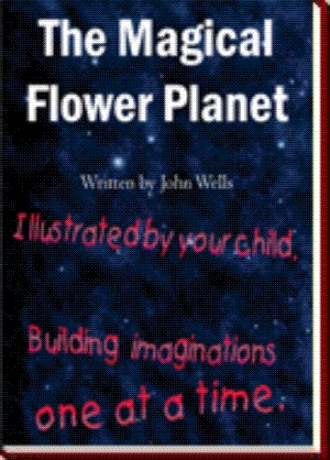In order for your child to get the most benefit from this book,
please read these two pages before you give this book to the child.
The Magical Flower Planet is designed to develop a child’s reading skills and imagination. Children have a natural curiosity and desire to learn. As adults, we often forget that learning is supposed to be fun. Fun facilitates learning. If the activity isn’t fun, the child will learn little or nothing. Worse still, if the activity isn’t fun, the child will become turned-off to learning, setting up a lifetime of failure and frustration.
Think of a hobby of yours. How much have you learned in that hobby? If that hobby was a long time ago, do you remember the information you learned? If a situation comes up in your life where you need the information you learned in your hobby, will you be able to utilize that information?
Think of a teacher that made school fun. How much did you learn in that class? Do you remember the information from that class? If a situation comes up in your life where you need the information from that class, will you be able to utilize the information?
Now think of a teacher or class that wasn’t fun. How much did you learn in that class? If a situation comes up in you life where you need that information from that class, will you be able to utilize the information?
Universally adults will agree that they learned more, retained more and are more able to utilize the information when the learning was fun. Yet many of those same adults will make learning into a chore for children.
The Math teacher who makes children do hundreds of boring problems in the misguided belief that this torture will somehow result in learning Math only teaches his students that they don’t like Math. Then when they turn-off to Math, they start failing and they “learn” that they are less capable in Mathematics. Yet, this is the traditional approach to teaching Math.
On the other hand, the Math teacher who engages his students with fun games and activities that have the same Mathematics concepts as the traditional teacher will see his students learn the Math, retain what they learn and be able to apply these concepts in their lives.
Similarly, when we want a child to learn to read, we have to make the reading enjoyable. If reading is fun, the child will be motivated to learn and learning will naturally follow.
I teach High School students who have been referred by traditional schools, usually for a combination of academic and behavior problems. The first day in my class, I assign each student to find a book they like and read it. If they tell me they don’t like to read, I ask them what they do like. If they like skateboarding, I give them a book or magazine about skateboarding. I don’t “teach” them how to read. I facilitate them teaching themselves.
My students are always thanking me for teaching them how to read better. When this happens, I ask them, “What exactly did I do to teach you?” While I do teach some reading strategies, the main emphasis of my reading program is having the students read material they enjoy. Then they get the point that what I really taught them was that reading can be fun. Then by reading, they taught themselves how to read better.
The same process works for teaching emergent readers to read. While some phonics instruction is definitely required; the main emphasis should be on reading material the child enjoys. Children naturally love to be read to. They love a good story. At first we read to the child, then gradually the child reads to us. The entire process should be fun for both you and the child. Remember to read to your child every single day.
We also need to keep in mind that children begin with a backwards approach to reading, in that they see the pictures as the story and the words as meaningless. This book having no pictures naturally facilitates the child getting the concept that the words are the story and thereby have meaning. By having the child illustrate the story, the child naturally learns that the pictures come from the words.
You will notice that this isn’t like a coloring book with lines for the child to color in. The child needs to use their imagination to create the illustrations from the story. The child deciding what to draw fosters the development of the child’s imagination and creativity while exercising the child’s reading comprehension skills.
Remember reading should be fun. No matter what the child


